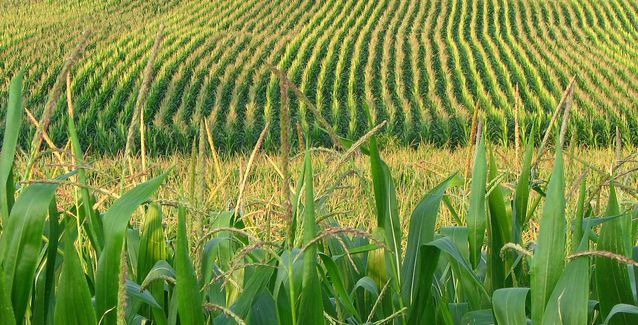Significant planting woes plague Arkansas farmers, especially those planting corn
by May 13, 2019 3:11 pm 1,360 views

Perpetual rains, the ongoing trade war with China, and low commodity prices are putting intense pressure on Arkansas farmers as the planting season unfolds, and one crop, corn is now in deep peril.
As of May 6, only about 73% of the state’s 830,000 planned acres of corn had been planted, according to the U.S. Department of Agriculture. During the last week, intermittent rains and flooding have likely prevented much progress beyond those numbers, likely leaving about a quarter of that acreage — more than 200,000 acres — unplanted, according to the University of Arkansas System Division of Agriculture.
Most farmers in all but nine counties had to have their crop planted by April 25 to meet crop insurance requirements as determined by the USDA’s Risk Management Agency. For those remaining counties — Clay, Craighead, Greene, Independence, Jackson, Lawrence, Mississippi, Poinsett and Randolph — that date was May 1.
Under the various crop insurance plans available to growers in Arkansas and elsewhere, farms then enter a 15-day “late planting period,” during which time insurance coverage that is designed to help growers recoup a portion of their input costs, such as seed, herbicide, fertilizer and fuel, drops by 1% a day.
For growers in most counties in the state, that period ends on May 10. For the nine outlier counties, it ends May 16.
Scott Stiles, extension economist for the Division of Agriculture, said that most growers, in a typical year, would simply shift that acreage to cotton or, more commonly, soybeans. Heavy rains, commodity prices and trade relations are always headwinds that farmers face, but 2019 has been the worst in at least a decade.
“But that’s not necessarily a good alternative right now,” Stiles said. “If you’d gotten to this point, and soybeans were $10 a bushel, you’d just plant soybeans. But soybean prices are so depressed that they’re not presenting a viable alternative for corn growers.”
The current soybean futures continued to trade lower this week, and the November contract settled at just above $8.34 a bushel. Cash prices, for soybeans delivered directly to elevators without a pre-existing contract, are even lower, dipping below $8 a bushel, depending on a given elevator’s basis, about the difference between the local cash price and the futures price.
Stiles said basis levels range from about 25-cents a bushel under futures for elevators on the Mississippi River to more than 50-cents a bushel under futures at elevators situated elsewhere throughout the state.
When planting a follow-up crop in the wake of prevented planting, assuming that it was an insurable cause, growers are typically eligible for a partial prevented planting payment, Stiles said about 35% of the full prevented crop. The third option available to growers is to take a full prevented planting payment.
“But to do that, insureds have to leave that farm idle for the rest of the year,” Stiles said. “Nothing else can be planted on that farm.”
Full prevented planted payments are typically 55% of a grower’s original insurance coverage, based on his or her historical yields for a given crop and other factors, Stiles said.
“If you took the average yield for the state, and the amount of insurance growers typically take out, it’s going to be close to $280 an acre,” he said.
Stiles said that planting is lagging behind historical norms for all crops this year, but corn is reaching the end of its late planting period.
“With rice, cotton and soybeans, there’s still time before we reach the crop insurance final planting dates,” he said. “But certainly, the calendar and the weather forecast is working against corn growers.”
Stiles said growers are continuing to plant into the late planting period, although they do so facing the likelihood of substantially reduced yield. Research from the Division of Agriculture and other institutions show a precipitous drop in yields from corn planted after May 1, dropping about 1.3 bushels per acre a day through May, and dropping about 2.1 bushels per acre a day after June 1.
A drying period may be on the way for the Mississippi Delta Region that could aid farmers trying to plant crops. Throughout the week, there are slight chances of rain on Wednesday, but otherwise it will be sunny according to the National Weather Service. There are chances for rain on Saturday and Sunday.
